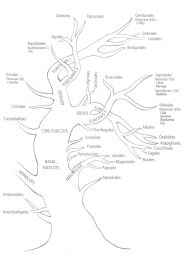Friedlieb Ferdinand Runge (1794-1867)
is commonly regarded as The Discoverer of caffeine.
However, during my 50 years of caffeine research, I came to the conclusion that Runge does not deserve this title, as his own records clearly show that what he isolated did not exhibit the characteristics of caffeine!
Neither the shape of the crystals ("platelets") nor the behaviour under heating ("is not volatile") apply to caffeine.
What he extracted from entire green coffee beans with cold water can only be speculated about.
Moreover, Runge described his experiments in such a negligent manner that nobody would be able to repeat them. He covers up these inadequacies with pseudo-precise information, e.g.:
"The unroasted beans [*footnote cheribon], freed from their thin epidermis by washing, are extracted without damage by frequent shaking with cold water, without applying the least amount of heat (in summer, the digestive mixture is stored in the cellar). After filtering the (cloudy) extract, 'sauer essigsauer Bley' is added, which produces a strong white precipitate and eliminates caffeic acid No. 1."
I suggest that Runge had isolated trigonelline:
Intact green coffee beans hardly release any caffeine (Baumann & Gabriel, 1984), whereas trigonelline is known to easily leach from e.g. imbibed legume seeds (Phillips et al., 1992). To my knowledge trigonelline efflux from coffee seeds has never been tested.
The young Runge, who grew up in humble circumstances and was inspired by Oken's views, circumvented the peer review process of the chemical journals by having his results printed and published as a book: Neueste phytochemische Entdeckungen zur Begründung einer wissenschaftlichen Phytochemie
Autor / Hrsg.: Runge, Friedlieb Ferdinand ; Runge, Friedlieb Ferdinand
Verlagsort: Berlin | Erscheinungsjahr: 1820 | Verlag: Reimer.
Moreover, in contrast to the real discoverers of caffeine, Ferdinand Giese and Pierre-Jean Robiquet, Friedlieb Runge was – relatively unusually for that time – a brilliant self-promoter.
Furthermore, I would like to refer to the publication of Runge biographer Heinz H Bussemas et al., in which Runge's contributions to chromatography are highlighted. It also quotes the works on Runge's writings published by this author.
The 'Caffeines'
The
Caffeine Plants


